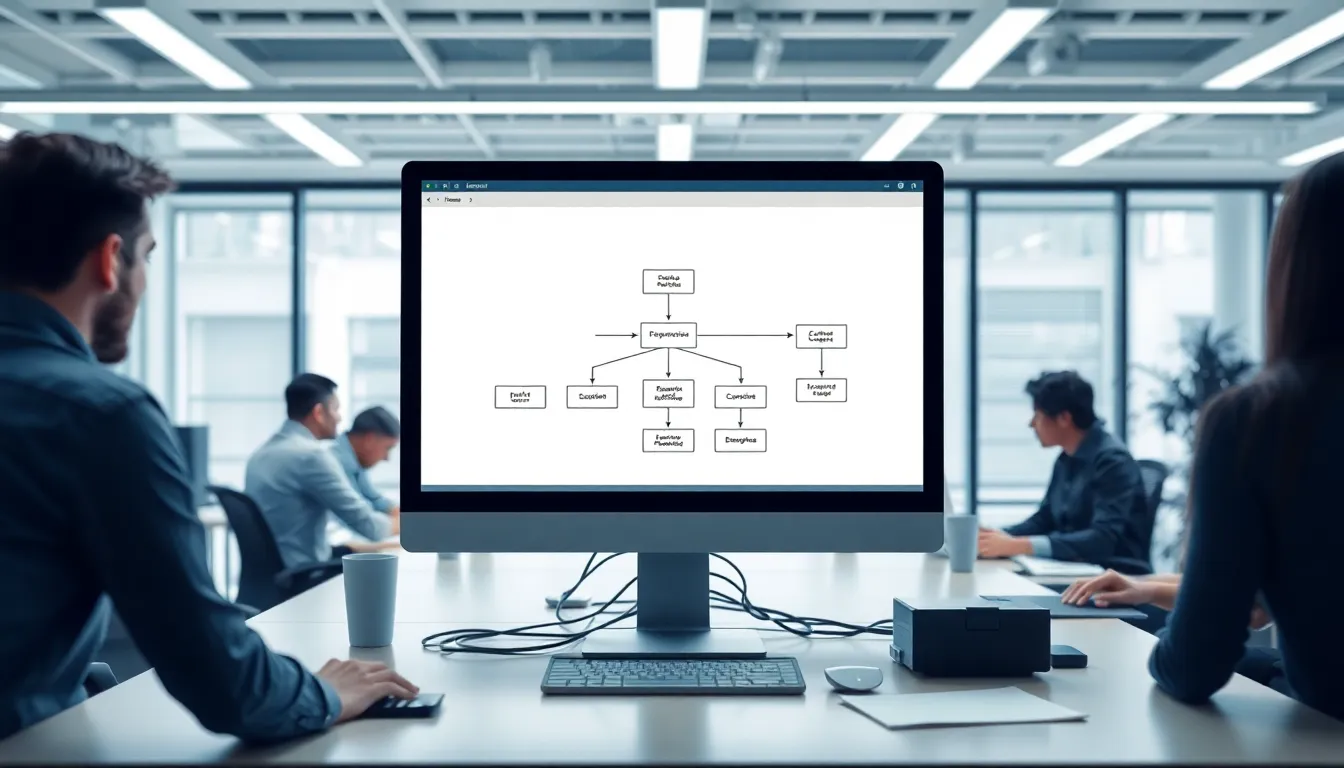In today’s tech landscape, microservices are like the cool kids on the block—everyone wants to hang out with them. They promise flexibility scalability and a sprinkle of magic to your applications. But with great power comes great responsibility, and that’s where the security of these tiny titans comes into play.
Table of Contents
ToggleUnderstanding Microservices Security
Microservices transform application architecture by breaking down monolithic structures into smaller, independent components. Each microservice focuses on specific business functions, enhancing overall application agility.
Definition of Microservices
Microservices refer to a software development approach where applications are composed of loosely coupled services. Each service operates independently and can be developed, deployed, and scaled without affecting others. This architecture allows teams to use different technologies suited for each service, fostering innovation. For example, a payment service can run on Java while a user authentication service uses Python. This modularity promotes seamless updates and faster deployment cycles.
Importance of Security in Microservices
Security plays a critical role in microservices due to their distributed nature. Attacks on individual services can escalate quickly, impacting the entire application ecosystem. Implementing strong security measures protects sensitive data and prevents unauthorized access. For instance, utilizing API gateways for secure interactions between services enhances data protection. Additionally, applying authentication and authorization standards guarantees that only authorized users and services access sensitive functionalities. Prioritizing security at each service level minimizes vulnerabilities and strengthens the overall application’s resilience against threats.
Common Security Challenges

Microservices face several security challenges due to their distributed architecture. Addressing these issues is crucial for maintaining the integrity of applications.
Data Breaches
Data breaches pose significant risks in microservices environments. Attackers target individual services to steal sensitive information. Each service handling user data adds an access point for potential breaches. Implementing robust data encryption techniques protects confidential data both at rest and in transit. Additionally, regular audits of data access logs can reveal unusual activity, enhancing oversight.
Insecure APIs
Insecure APIs represent a major vulnerability in microservices. Improperly secured APIs can expose microservices to unauthorized access and manipulation. Ensuring APIs conform to strict authentication and authorization protocols aids in fortifying these entry points. Utilizing tokens for API security adds an extra layer of protection. Continuous testing of APIs for potential flaws helps in identifying weaknesses before they can be exploited.
Configuration Issues
Configuration issues can lead to serious security gaps in microservices. Misconfigurations often result in default settings remaining unchanged, leaving components exposed. Regularly reviewing configurations across all microservices helps identify and rectify these problems. Utilizing automated tools for configuration management can reduce human error. Establishing a governance model ensures adherence to best practices consistently.
Best Practices for Microservices Security
Secure microservices require robust strategies that address potential vulnerabilities. Implementing strong authentication and authorization measures is essential.
Implementing Authentication and Authorization
Strong authentication protocols protect access to microservices. Utilizing methods such as OAuth 2.0 and OpenID Connect offers industry-standard solutions for securing services. Authorization layers ensure users can only access necessary resources, reducing risk. Implementing token-based authentication allows services to verify user identity without recurring password checks. Regularly updating authentication mechanisms helps mitigate emerging threats.
Using API Gateways
API gateways enhance microservices security by serving as a management layer. They centralize authorization, authentication, and traffic management across services. Using API gateways contributes to reduced exposure of backend services, effectively shielding them from direct access. Rate limiting and logging features assist in monitoring and controlling traffic, deterring abuse. An API gateway can also enforce security measures consistently, ensuring compliance with organizational policies.
Regular Security Audits
Conducting regular security audits identifies vulnerabilities within microservices environments. Audits should encompass configuration settings, access controls, and API security. Automated tools can assist in identifying discrepancies and ensuring compliance with security standards. Reviewing access logs provides insight into potential unauthorized activities, enabling prompt remediation. Frequent audits foster a proactive approach to security, safeguarding sensitive data across the entire microservices architecture.
Tools and Technologies for Security
Securing microservices requires specific tools and technologies tailored to their unique architecture. Various options are available that enhance security measures and provide effective monitoring.
Security Monitoring Tools
Security monitoring tools actively track the behavior of microservices to detect anomalies. Solutions like Prometheus and Grafana provide real-time insights into service performance and potential security threats. Utilizing ELK Stack (Elasticsearch, Logstash, Kibana) allows organizations to collect and analyze logs from multiple services, helping identify suspicious activities quickly. Security Information and Event Management (SIEM) systems also play a crucial role. These systems aggregate data from different sources, facilitating comprehensive analysis and faster incident response. Regularly reviewing these tools reinforces security posture across the entire microservices architecture.
Container Security Solutions
Container security solutions focus on protecting microservices deployed within container environments. Tools like Aqua Security and Twistlock help manage vulnerabilities throughout the container lifecycle, starting from development to production. Implementing runtime security measures ensures that any unauthorized activities within containerized environments are swiftly detected and mitigated. Additionally, integrating vulnerability scanners during the CI/CD pipeline minimizes risks by identifying weaknesses before deployment. Continuous monitoring of containers strengthens overall security by ensuring no unrecognized changes occur. Leveraging these tools effectively safeguards microservices and maintains a robust security framework.
Future Trends in Microservices Security
The landscape of microservices security is rapidly evolving, with emerging trends aimed at enhancing protection and compliance.
Emergence of AI and Machine Learning
AI and machine learning are transforming security protocols in microservices environments. These technologies analyze patterns and behaviors, enabling real-time threat detection. By automating vulnerability assessments, AI significantly reduces the time required to identify and remediate weaknesses. Machine learning models predict potential attack vectors, allowing for proactive defenses. As more organizations adopt these innovations, they strengthen their security posture without overwhelming human resources.
Enhanced Compliance Standards
Compliance standards are becoming more stringent for microservices architectures. Organizations must adhere to frameworks such as GDPR and HIPAA to safeguard personal data. Strict regulations necessitate robust documentation and regular audits of microservices deployments. Enhanced compliance measures ensure that data handling practices meet legal requirements. Regular training on these standards fosters a culture of security awareness among teams. Ensuring compliance not only minimizes legal risks but also builds trust with customers.
Microservices security is vital in today’s digital landscape. As organizations embrace this architecture, they must prioritize protective measures to safeguard sensitive data and maintain system integrity. Implementing strong authentication protocols and utilizing API gateways can significantly enhance security resilience.
Regular audits and the adoption of automated tools for monitoring vulnerabilities are essential for staying ahead of potential threats. The evolving role of AI and machine learning promises to revolutionize security practices, offering real-time threat detection and streamlined compliance.
By fostering a culture of security awareness and adhering to best practices, organizations can build trust with their customers while effectively navigating the complexities of microservices environments.



